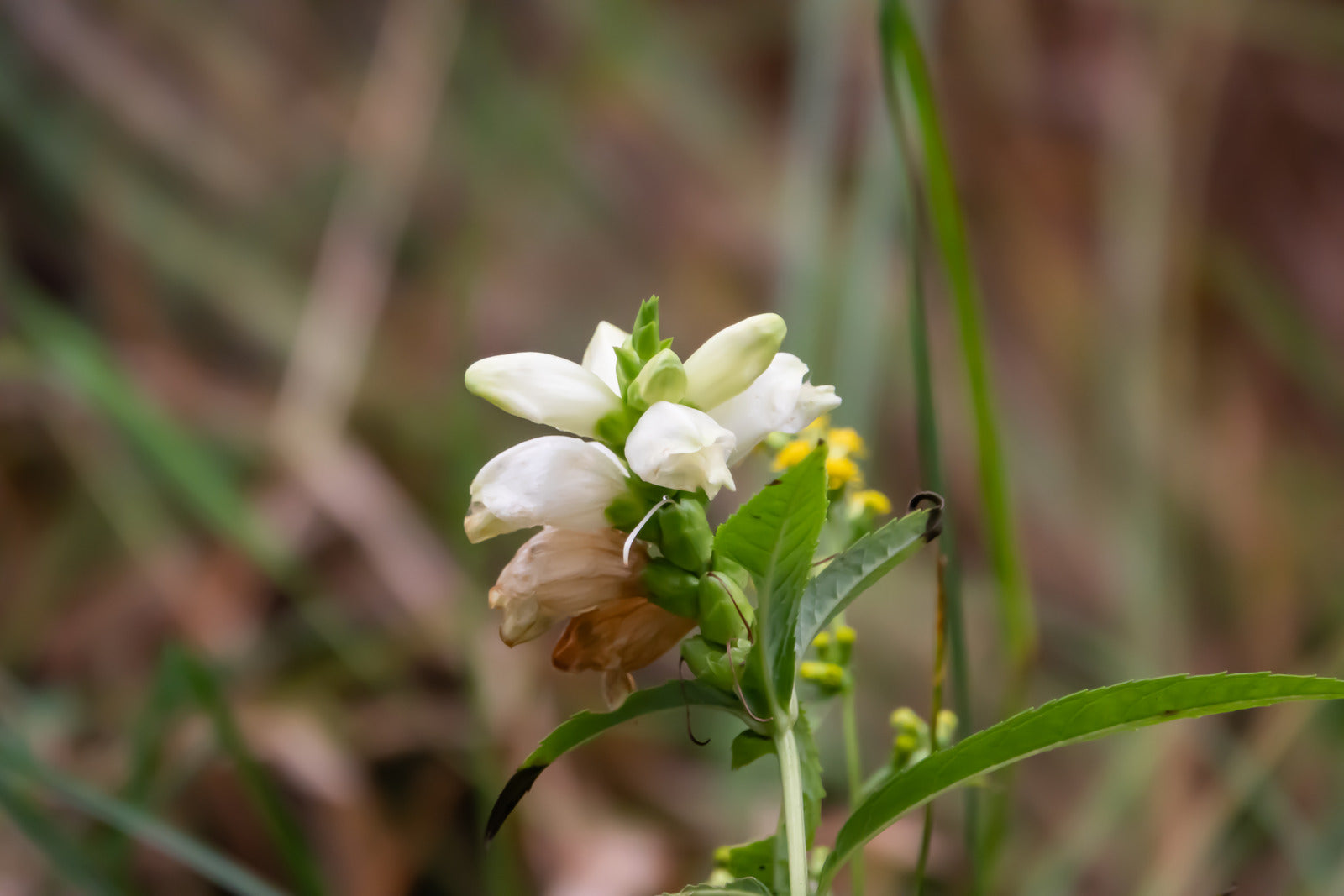1
/
of
1
CHELONE GLABRA / TURTLEHEAD
- Regular price
-
$17.99 CAD - Regular price
-
- Sale price
-
$17.99 CAD
Shipping calculated at checkout.
Couldn't load pickup availability
Delivery Fees
Delivery Policy
Enjoy FREE delivery on all orders over $149!
For orders between $80 and $149, a $18.99 delivery fee will apply.
Orders under $80 will be prompted to add more items to your cart.
- Distinctive White Flowers: White turtlehead gets its common name from its distinctive white, tubular-shaped flowers that resemble the head of a turtle. These flowers are arranged in dense spikes and have two lips, with the lower lip acting as a landing platform for pollinators.
- Attracts Pollinators: The unique shape of the flowers of Chelone glabra is well-suited for attracting pollinators, especially bumblebees and butterflies. They use the landing pad on the lower lip to access the nectar, ensuring the plant's pollination.
- Moisture-Loving Plant: White turtlehead is typically found in wetland and riparian habitats, and it thrives in moist to wet soils. This makes it an excellent choice for rain gardens, wetland restoration projects, and other areas with consistent moisture.
- Foliage and Form: In addition to its attractive flowers, Chelone glabra has dark green, lance-shaped leaves that provide visual interest even when the plant is not in bloom. It forms a clumping habit and typically reaches heights of 2 to 3 feet (60 to 90 centimeters).
- Wildlife Habitat: Beyond its role as a pollinator attractor, white turtlehead provides habitat and food for other wildlife. Its foliage and habitat offer cover for small animals and nesting sites for some bird species. The seeds may also be consumed by birds.
- FLOWER SIZE: 2.5 CM
- SPREAD 40-50 CM
- HEIGHT 60-90 CM
- PLANT ZONE 5
- NATIVE TO ONTARIO
Care Instructions
Different plants have different watering needs. Check the soil moisture by inserting your finger about an inch into the soil. If it feels dry, water the plant until the water drains from the bottom of the pot. Avoid overwatering, as it can lead to root rot.

CHELONE GLABRA / TURTLEHEAD
- Regular price
-
$17.99 CAD - Regular price
-
- Sale price
-
$17.99 CAD
SALE
All Echinacea & Monarda, Buy 4 get 1 Free! No code required


